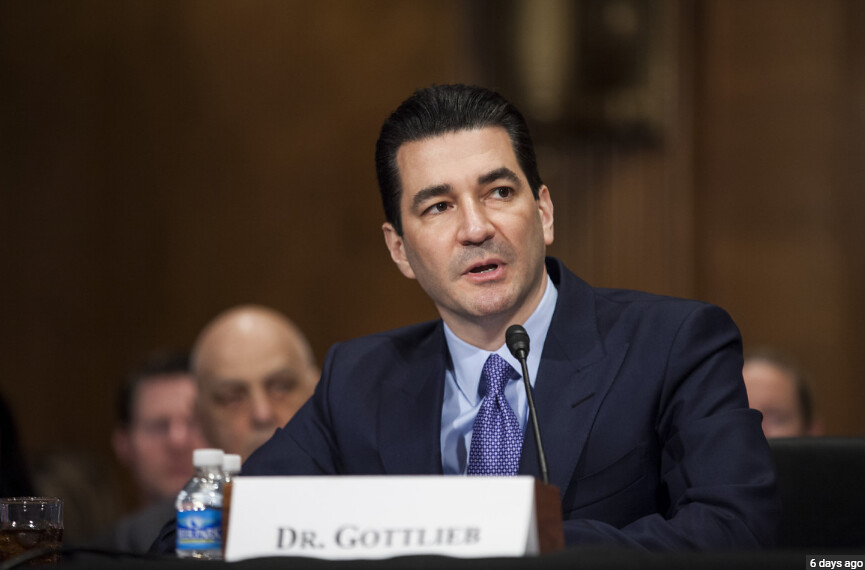Source: Department of Energy
The Trump Administration has waged war to close the Advanced Research Projects Agency-Energy Program (of division) over the last two and a half years. Why? In large part because President Obama created ARPA-E which immediately sets the organization into the crosshairs of the Congressional budget committee each year. The behavior of the President is strange given that both Republicans and Democrats feel that funding for ARPA-E as an organization is critical to meet the energy needs of the future of the United States.
To understand the motivation further of the Trump Administration, let's take a look at the Wikipedia page description of the Agency:
Legislative history
The concept of ARPA-E was initially conceived by a report by the National Academies entitled Rising Above the Gathering Storm: Energizing and Employing America for a Brighter Economic Future. The report recognized a U.S. need to stimulate innovation and develop clean, affordable, and reliable energy.[1] ARPA-E was officially created by the America COMPETES Act , authored by Congressman Bart Gordon,[2] within the United States Department of Energy (DOE) in 2007, though without a budget. The initial budget of about $400 million was a part of the economic stimulus bill of February 2009.[3] Then in early January 2011, the America COMPETES Reauthorization Act of 2010 made additional changes to ARPA-E’s structure; this structure is codified in Title 42, Chapter 149, Subchapter XVII, § 16538 of the United States Code.Among its main provisions, Section 16538 provides that ARPA-E shall achieve its goals through energy technology projects by doing the following:(1)Identifying and promoting revolutionary advances in fundamental and applied sciences;(2)Translating scientific discoveries and cutting-edge inventions into technological innovations; and(3)Accelerating transformational technological advances in areas that industry by itself is not likely to undertake because of technical and financial uncertainty.
Mission
Like DARPA does for military technology, ARPA-E is intended to fund high-risk, high-reward research that might not otherwise be pursued because there is a relatively high risk of failure.[4] Like DARPA, it is intended to fund projects involving government labs, private industry, and universities. ARPA-E has four objectives:(1)To bring a freshness, excitement, and sense of mission to energy research that will attract the U.S.'s best and brightest minds;(2)To focus on creative, transformation energy research that the industry cannot, or will not support due to its high risk, but that has high reward potential;(3)To utilize an ARPA-like organization that is flat, nimble, and sparse, capable of sustaining for long periods of time those projects whose promise remains real, while phasing out programs that do not prove to be as promising as anticipated; and(4)To create a new tool to bridge the gap between basic energy research and development/industrial innovation.[4]
Launch
President Barack Obama announced the launch of the Advanced Research Projects Agency–Energy (ARPA-E) on April 27, 2009 as part of an announcement about federal investment in research and development and science education. Soon after its launch, ARPA-E released its first Funding Opportunity Announcement for the new agency, offering $151 million in total with individual awards ranging from $500,000 to $9 million. Applicants submitted eight-page "concept papers" that outlined the technical concept; some were invited to submit full applications.[5]Arun Majumdar, former deputy director of the Lawrence Berkeley National Laboratory, was appointed the first director of ARPA-E in September 2009, over six months after the organization was first funded.[6] U.S. Secretary of Energy Steven Chu presided over the inaugural "ARPA-E Energy Innovation Summit" on March 1–3, 2010 in Washington, D.C..[7]
After reading the above excerpt, who would not want to provide funds for the research initiatives conducted by ARPA-E. With that being said, the only real reason which I can find for shutting down the program (aside from Obama's vision) is that the funding is for renewable/clean energy for the future of the United States. ARPA-E is a spin-off from DARPA (Defense Advanced Research Projects Agency).
DARPA projects are specifically aimed at the military. Years ago in graduate school, I had a research project which was funded by DARPA. The research project was centered around the understanding of limits of quantum computation (quantum information processing) using Solid-State Nuclear Magnetic Resonance Spectroscopy (SSNMR). Members of the public might think that there is no connection between the SSNMR spectroscopy and the military.
Although, the progress made on the project would indirectly improve the measurement known as Magnetic Resonance Imaging (MRI) in the hospital setting. Funding for DARPA projects is usually aimed to fund projects which are high risk with large pay-offs along with high failure rates. The range and scope of projects which are supported by DARPA are large. Which is partly why a specific agency was created -- aimed explicitly at renewable energy research.
Additionally, the need to fund renewable energy projects which pose a large pay-off with a high risk of failure is essential. As I emphasized earlier, the need to have a broad portfolio of diverse research projects is critical. Casting as wide of a net as possible ensures a diverse range of technologies which result from the initial plans. Therefore, keeping the funding source open and increasing the level of funding annually, ensures a healthy nation which keeps up with the pace of developing (and researching) new technologies.
In light of the obvious, universities and private organizations have banded together to show support for the continuation of ARPA-E funding into the future. Here is the letter of support from many organizations (corporations and universities) for the extension in arpa-e financing (and program):
Dear Chairman Alexander, Ranking Member Feinstein, Chairwoman Kaptur and Ranking Member Simpson,As diverse organizations interested in the Department of Energy’s Advanced Research Projects Agency – Energy (ARPA-E) program, we thank you for the significant funding for this vital program in Fiscal Years 2018 and 2019. ARPA-E plays a unique and critical role in maintaining America’s global leadership in energy technologies. As you begin drafting the Fiscal Year 2020 Energy and Water Appropriations bills, the undersigned organizations, companies and institutions urge you to enhance our competitiveness and energy security by supporting robust funding for ARPA-E in the Fiscal Year 2020 appropriations bill. We support funding ARPA-E at least at $400 million in Fiscal Year 2020. This is roughly $35 million higher than in Fiscal Year 2019 and would allow for one additional program solicitation to pioneer advances in a high-impact energy technology area.ARPA-E is a highly innovative and effective program which enjoys strong bipartisan congressional support. Since its inception, ARPA-E has successfully sponsored a dynamic range of research, including technologies with potentially profound benefits for the nation’s future energy security. Modeled after the highly successful Defense Advanced Research Projects Agency (DARPA), ARPA-E supports “high-risk, high-reward” research which has the potential to drastically alter how we make and use energy in the future. The program utilizes a unique organizational structure and highly successful selection process to identify innovative technologies, pushes them to meet aggressive milestones and helps them to cross the valley of death so the private sector can then commercialize them.Despite being just ten years old, ARPA-E is already fostering technological breakthroughs in energy storage, transportation fuels, and industrial efficiency. To date, 136 of more than 340 completed projects supported by ARPA-E have attracted over $2.6 billion in private sector follow-on funding, and 71 projects have gone on to form new companies. The enthusiasm for ARPA-E’s vision and quality of work is evidenced by its ability to repeatedly draw more than 2,000 entrepreneurs, state and federal government officials, state and federal agencies and large numbers of investors to its annual Energy Innovation Summit.The importance of U.S. leadership in energy technologies to our economic and energy security makes ARPA-E a tremendous competitive advantage for our nation. Stable and sustained funding growth is necessary to ensure this successful program continues to enhance America’s ability to pioneer the energy technologies of tomorrow.
and the signers were from the following organizations:
American Chemical SocietyAmerican Council for Capital Formation (ACCF)American Geophysical UnionAmerican Society of AgronomyAssociation of American UniversitiesAssociation of Public and Land-grantUniversitiesBASF CorporationBettergy Corp.BPC ActionBrayton EnergyCitizens for Responsible Energy SolutionsClean Energy Business NetworkClean Energy TrustCleantech AllianceClearPath ActionCopper Development AssociationCrop Science Society of AmericaDioxide MaterialsDuke UniversityE2 (Environmental Entrepreneurs)Elemental Excelerator, Inc.Energy Technology Savings, Inc.Environmental Defense FundFearless FundFlash Steelworks, IncFlorida State UniversityGeneral ElectricGeorgia Institute of TechnologyGnosys, Inc.Greentown LabsIndustrial Microbes, Inc.Information Technology and InnovationFoundationIntel CorporationIntrospective SystemsIonic Materials, Inc.LEEDCoMalta IncMarine BioEnergy, Inc.Massachusetts Institute of TechnologyMichigan State UniversityMichigan Technological UniversityNational Audubon SocietyNational Venture Capital AssociationNational Wildlife FederationNatron Energy, Inc.Natural Resources Defense CouncilNewton Energy Group LLCNuclear Energy InstituteOnboard Dynamics, Inc.OtherlabPajarito Powder, LLC.Penn State UniversityPowerhousePrinceton UniversityProspect Silicon ValleyRedWave Energy, Inc.SAFCellSixPoint Materials, Inc.Soil Science Society of AmericaSolar Energy Industries AssociationSpruce Capital PartnersSSTIStarfire EnergyStony Brook UniversitySwift Coat, Inc.TechNetTenley ConsultingThe Nature ConservancyThe State University of New York SystemThe Texas A&M University SystemThird WayUnited Technologies CorporationUniversity of California SystemUniversity of California, BerkeleyUniversity of California, Los AngelesUniversity of California, MercedUniversity of California, San DiegoUniversity of Colorado BoulderUniversity of Houston SystemUniversity of Illinois at Urbana-ChampaignUniversity of Illinois SystemUniversity of Maryland, College ParkUniversity of North Carolina SystemUniversity of OregonUniversity of RochesterUrban Future Lab/ ACRE IncubatorUS Chamber of CommerceVanderbilt University
The above signatures (organizations) represent a massive research consortium. From industry to academia, there is full support for ARPA-E. Especially, since investment in energy projects will undoubtedly return dollars to the market in one form or another (either directly or indirectly). Congressional leaders realize the importance of funding a diverse portfolio of projects both aimed at improving the military side of the nation along with projects aimed at society in general. More often than not, investment in either pays off in some manner.
Investing money into research might seem pointless at times. Although, if we look back into history and see the numerous advances which have come out of research spending, funding projects into the future would not ever be questioned. That is not to say we (as a nation) should throw money at any given research project being proposed.
To close the loop on this conversation, check out this short video about ARPA-E which introduces a few of the concepts which drive research at the organization:
A nation with a diverse and appropriate funding scheme which supports a wide range of projects stands to gain the most. The United States spends most of GDP on research compared to other nations. Although, the United States also benefits the most from their investments. The correlation is obvious. Spend more and get more. But spend smart too.
Related Blog Posts:
Congress Intervenes And Asks For No More Oil Drilling Off Of Florida
President Trump Is Out Of Touch With The Transition Toward Renewable Energy
EPA Director Finally Realizes Reality Of Trying To Roll-Back Obama Era Clean Air Act Regulation
Environmental Groups Question Environmental Protection Agency (EPA) Cuts
President Trump's Immigration Rhetoric Damages International Science Student Enrollment
What Promises Did President Trump Make Science Research During His Campaign?
Can The President Prevent The Public From Learning About Scientific Research???
President Trump's Understanding of the Paris Agreement
World Goes Left, While Trump Leads Right - On Climate - Why?
Is This Behavior Presidential - President Trump?
Paris Climate Agreement Is A Start Toward The Renewable Energy Future
READ THIS BEFORE VOTING -- Presidential Science (WORLD) Issues!
Brings Jobs Back By Promoting Renewable Energy!






